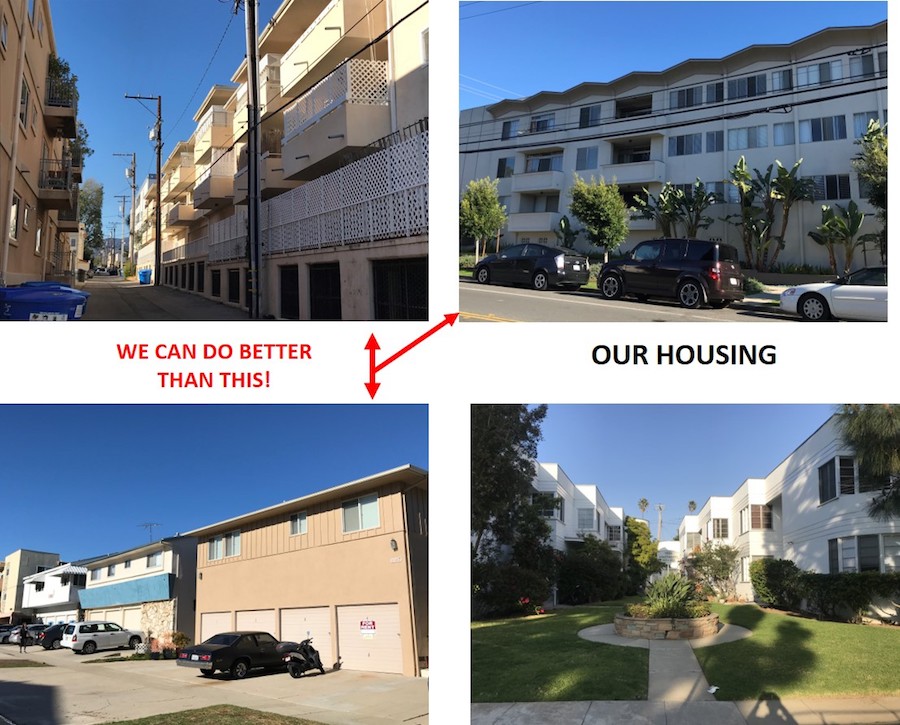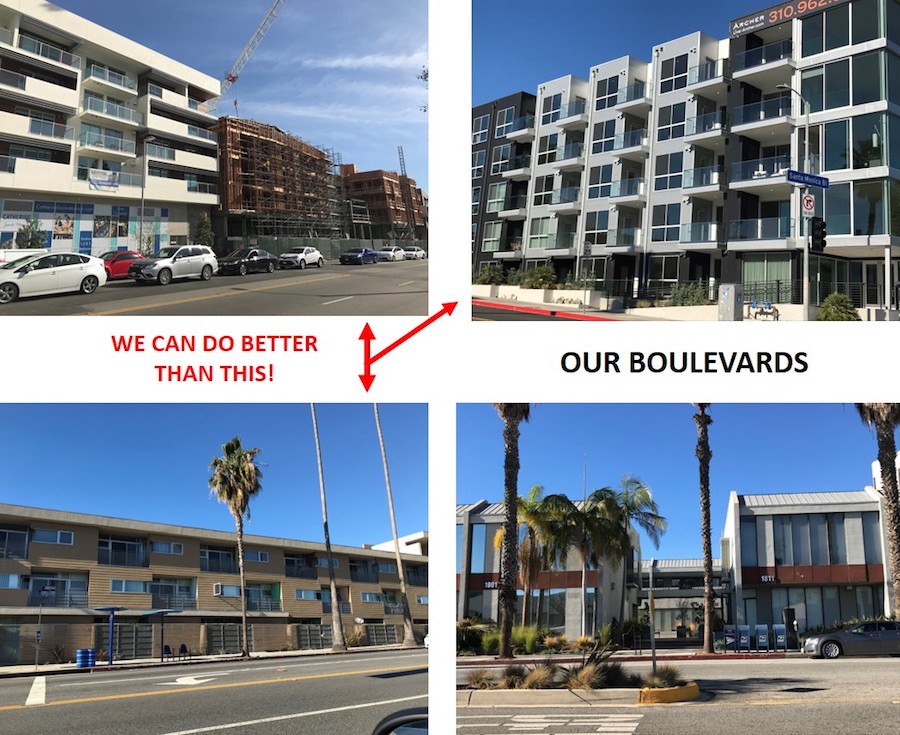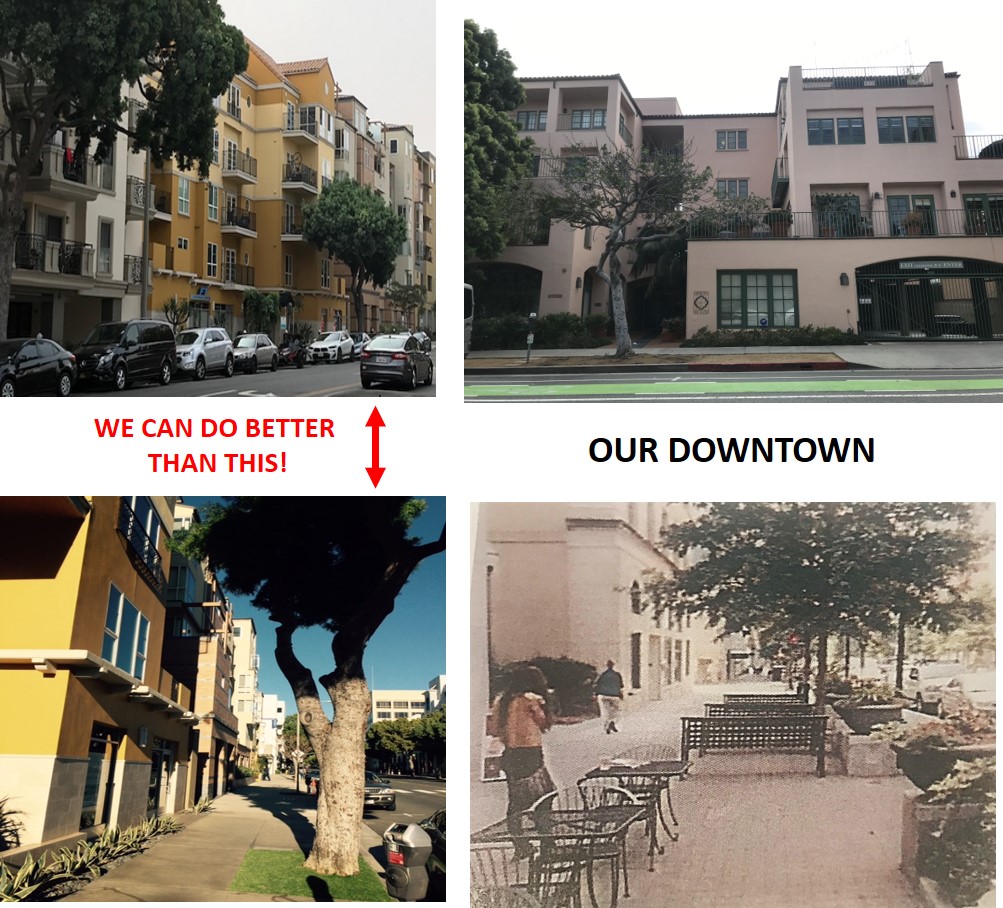
Santa Monica has spent 20+ years swimming uphill in a partnership with the development community that isn’t working – a bargain with the devil to increase land values and rents in exchange for a handful of “inclusionary” units. We need a new vision for our city along with a housing element that understands Santa Monica’s future that does not need to be higher and denser, not one of infinite growth but one of sustainability. We became a house divided, a city divided – but with our new City Council we have an opportunity for residents to come first, not visitors! Let’s not waste this opportunity.
The city needs to look beyond the lunacy of providing 6,000 affordable and 2,900 market rate units in 8 years! We should update the housing element for our needs, not SCAG’s! We need our planning department to start working for residents, not the development community! The pandemic – with its effect on vacancies, the economy, tourist industry, etc. – gives us that opportunity.
But the housing element is only one part of the urban matrix. We need to look at the variety of districts and circulation in a coordinated planning process. We need to re-imagine mobility – a walkable, pedestrian friendly environment at a human scale with a matrix of public spaces that provide both economic and social interaction. Design is the difference between a good experience and a great one – it engages your emotions, keeps you coming back and encourages you to stay and play.
Briefly recapping prior articles, Part 1 dealt with the city’s failed partnership with the financial community with less than 8% of the housing built being affordable. Rent control has helped diversify our city, but combining “inclusionary housing” with market rate development has only increased construction costs and rents, complicated our codes and processing, and led to gentrification! We need to separate affordable and market rate housing. The city needs to invest in social housing by providing a small portion of the public land they own which is not used or ineffectively used. With zero land cost, lower construction and financing costs, tax and processing benefits, etc., there would be an overall 30-35% savings. And being a retired architect and developer who worked on the design of thousands of affordable units, I know that good design should not be an afterthought! Good design is good economics!
Parts 2 and 3 addressed the unfortunate demand of Sacramento to add 8,900 units or a 20% increase in population over the next 8 years, even though population has decreased since 2016 and there are currently 4,500 vacant apartments and 1,100 under construction. The development community in conjunction with Sacramento is taking over local planning. And if they are successful, the residents will be left to also pay for the 20% increase in infrastructure! And lifting restrictions in height and density only increases prices. No “upzoning” is required in our city. Instead, we need to capitalize on our untapped zoning. Over 1 million square feet of vacant retail and office space due to the pandemic is available to repurpose for residential, along with a substantial number of vacant or underdeveloped properties downtown or along our boulevards or in adjacent multi-family areas. In addition, there are ADU’s that can be added to 7,000 single family homes. But whatever is built should improve the natural environment it dwells in, not overwhelm our low to mid-rise city, which unfortunately has been the case recently.

Our housing crisis is one of affordability, not capacity! Which brings me to this week’s article addressing our zoning code and the modifications we can make to allow for growth while maintaining and reinforcing our “garden city”! What do we want our city to look like 8 years from now? State law does not allow zoning code reductions in density or height – currently ranging from 3 to 10 stories! Can we turn this negative into a positive? Simply said, we need to incentivize zoning to encourage creative design on a human scale instead of an economic scale. And we should start enforcing our “sustainability” mandate requiring a “net zero” energy design which realistically can only be achieved with 3 stories.
Our Downtown – We could add requirements for a much friendlier pedestrian environment with 5-10 foot sidewalk setbacks, landscaped sidewalks, book stalls, cafes, courtyard entrances, and terraced setbacks at upper floors to replace block building design! 3 or 4 story buildings would bring sunlight, air, and views to currently shaded sidewalks and invigorate our tree canopy. Tourism will come back and flourish in a creative lowrise environment. And we could bring “Mom & Pop” business which couldn’t afford the rents that larger corporate companies paid back to our city by adding arcades leading to the Promenade at lower rents, with limits on rental area, tax incentives, promotions, etc.
Our Boulevards – The gateways that give structure to our city. Historically, they provide mobility and economic opportunity. The majority of properties along these boulevards are single story with surface parking. We need to re-imagine our boulevards with incentives and design requirements added to the zoning code including tax credits, processing and permit benefits, reduced parking, promotional campaigns, etc. Our boulevards could shift from people just driving through to linear parks providing an environment for social interaction with neighborhood centers designed with widened meandering sidewalks, varying setbacks and courtyards, a percentage of ground floor commercial reserved to bring Mom & Pop back into town, with terraced housing above, and incentivized not to exceed 3 stories!
Our Multi-family – Apartment house design has gone from a history of courtyard housing to what could be described as a combination of beach barracks stacked in a blockhouse design. We need a code that requires courtyards instead of corridors. Clear design requirements can put a lid on the facadomy of these block buildings joined at the hip with 5 foot balconies ganged together looking like computer punch cards! With a multitude of commercial vacancies, there is also an opportunity to look with fresh eyes and modify the code to enable and encourage both creative and profitable development.
Let’s turn our zoning code from a negative to a positive! And while we’re at it, let’s rid ourselves of the Development Agreement portion of the code which has consistently proven to be a negative bargain with the devil.
In conclusion, please City Council, listen to your residents, not developers and tourists. Past Councils have been overly focused on housing and densification whereas the residents, are focused on quality of life. We look forward to recapturing our DNA with a City Council and a budget that’s not developer driven. Every decision should be explained in terms of residents first. Let’s not lose the opportunity to turn this negative into a positive! Instead of going to the “dark side,” we can still be a “city of gardens”!

And we challenge the Planning Department to think creatively, to help design a “better Santa Monica,” not a “developed Santa Monica.” We don’t want to “canyonize” our downtown, with boulevards primarily to move traffic, or our residential looking like 4, 5 & 6 story prison housing. We need to preserve Santa Monica’s “relaxed beach culture.” We need to maximize light, air, views, and green space with new construction in scale with existing housing stock. We need to create a walkable, bikeable, and driveable city with wider sidewalks, outdoor cafes, abundant landscape, and courtyard entries. We need to build at a human scale without highrises to define our character.
And Residents, which Santa Monica do you prefer – it’s time to speak up and take back your city from this coup of developers and Sacramento politicians! We are a house divided, a city divided, but with this new Council that’s not developer driven, we have the opportunity to reinforce our beachfront environment – let’s not lose it!
This period of time is unprecedented, but, to quote Benjamin Franklin, “out of adversity comes opportunity.” This pandemic is re-defining our working and living needs. Let’s take the time to look anew and adjust to whatever future comes our way, but of utmost importance is not losing Santa Monica’s character along the way!
Ron Goldman FAIA for SMa.r.t.
(Santa Monica Architects for a Responsible Tomorrow)
Thane Roberts, Architect, Robert H. Taylor AIA, Ron Goldman FAIA, Architect, Dan Jansenson, Architect, Building and Fire-Life Safety Commission, Samuel Tolkin Architect, Mario Fonda-Bonardi, AIA, Planning Commissioner, Marc Verville CPA Inactive, Michael Jolly, AIRCRE
For previous articles see www.santamonicaarch.wordpress.com/writing













